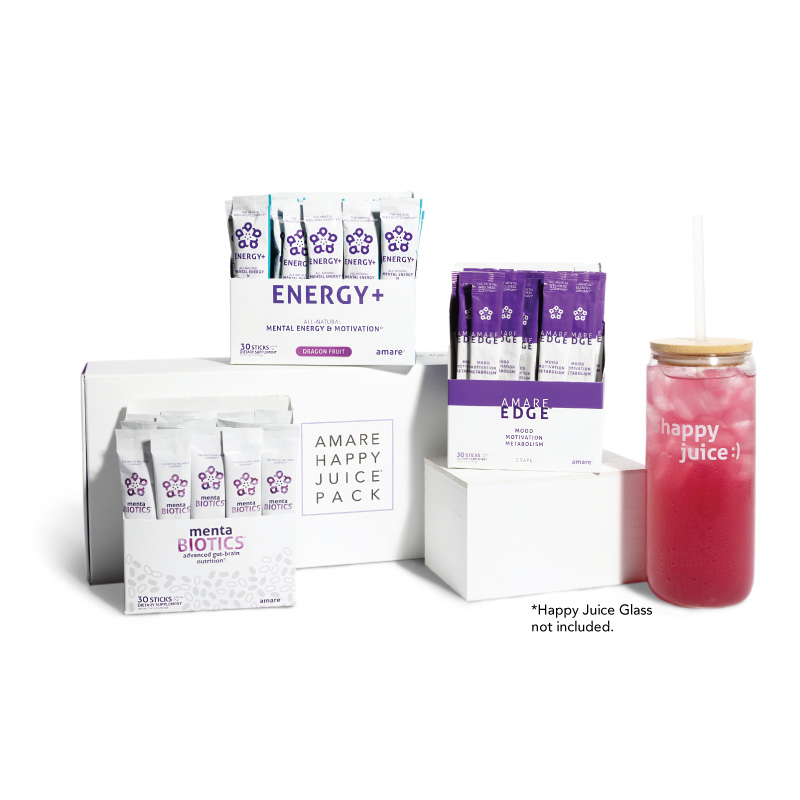Listen on: Apple Podcasts | Spotify
Irritable Male Syndrome…Did you know there is such a thing? Of course, you knew that guys could be irritable, but did you know there’s a syndrome with a physiological cause?
Based on the name, do you think you know someone who has it? If you’re a guy, is it possible you do?
An estimated one in five men has Irritable Male Syndrome, so I can safely assume you either have it or know someone who does.
Irritable Male Syndrome isn’t a male version of PMS, where a guy just has a few “off” days.
It is an almost-everyday issue. Unfortunately, it doesn’t just hurt the guy who’s got it.
Irritable Male Syndrome (IMS) affects his career, quality of life, friendships, and most of all, the relationships with those he loves most.
In fact, some women who live with a husband with IMS feel they are to blame for their husband’s erratic behavior, short temper, and grumpy attitude. Ladies, it’s not your fault.
Though relationship and psychological problems could also cause emotional issues for a guy, the symptoms of Irritable Male Syndrome often have a hormonal cause.
Before delving into the cause of IMS, I first want to cover how it shows up in a man’s life.
Read also: (Grand)Fathers, (Grand)Sons, and Reflections on Turning 41.

Feel Better Fast. Guaranteed.
Energy+, EDGE, and MentaBiotics make up the Happy Juice supplement stack, with ingredients clinically proven to:
- decrease anxiousness scores by 55%
- decrease irritability scores by 60%
- decrease fatigue by 64%
- decrease anger 54%
- decrease tension by 45%
- decrease confusion by 43%
- decrease overall distress by 49%
- increase good bacteria by 70%
- decrease negative mood by 105%
- increase positive mood by 211%
Symptoms of Irritable Male Syndrome/Andropause
Do any of the following scenarios sound like you, or someone you know and care about?
You’re crabby and feel like everyone or everything around you is the problem. In fact, you seem to find flaws in everything you see, and you weren’t that way in the past.
You’re a ticking time bomb. Sometimes you’re kind, considerate, and selfless. Other times you are a selfish jerk. You’re especially poopy towards those you love the most. But even in your jerky state, you know that it isn’t the real you.
You feel depressed. Nothing excites you or motivates you. You don’t feel like you have any “fight” left in you. Even the stuff you used to stand up for, you’d prefer to ignore.
Your body feels more fragile and looks more flabby. You’ve gotten weak and soft. You don’t need to shave as often, and your moobs (yeah, man boobs)…where did those come from?
The only thing that excites you in your bedroom is going to sleep, and you can’t remember the last time you woke up with an erection…come to think of it, you can’t remember a lot of things.
This is “real life” for a lot of guys. Unfortunately, most guys don’t say or do anything about it, because if they did, they’d have to admit something is wrong.
The symptoms of emotional disorders among males at [andropause] include moodiness, irritability, nervousness, depression, aggravation, fatigability, poor concentration, deteriorating memory, worse stress management and stress-related coping techniques, new aversion to certain activities that usually were enjoyable, or prolonged mood disorders.
Jakiel G, et al.
What is Irritable Male Syndrome/Andropause?
Irritable Male Syndrome goes by many names: Andropause, male menopause, male climacteric, viropause, androgen deficiency in aging males (ADAM), partial androgen deficiency in aging males (PADAM), symptomatic late-onset hypogonadism (SLOH), and testosterone deficiency syndrome (TDS).
There are slight nuances in how each of these conditions is classified. But for the most part, the core problems and symptoms in each are the same.
By the way, I use Irritable Male Syndrome, IMS, and andropause interchangeably throughout this article. It makes it easier to read, and it sounds better than repeatedly reading symptomatic late-onset hypogonadism.
You could also imagine “Grumpy Old Men.” It’s just that you don’t have to be old. And it isn’t always about being grumpy.
Andropause is the result of declining testosterone, dehydroepiandrosterone sulfate (DHEA-S), and insulin-like growth factor 1 (IGF-1). In some cases, the decline is due to age, and in others, it’s the result of poor lifestyle, nutrition, and exercise choices.
Man’s Dependence on Testosterone
Testosterone is what makes a man, a man. Women need a little testosterone as well, so I don’t want to overlook the importance for them. But this article is about men, so let’s stay focused on that.
When you mess with a man’s testosterone, you mess with his brain function, emotions, motivation, muscle, physical appearance, and so much more.
Historically, healthcare practitioners saw andropause as an older man’s issue. Like the average car that slowly breaks down over time, men’s bodies and metabolisms were seen the same way. Beginning in your 30s, most medical professionals expect your testosterone to drop.
But just as some guys still have a ’67 Mustang that looks and runs like it’s brand new, because of how it was taken care of, you can do the same for your body, well into late adulthood.
And, just as you can beat up a brand new Tesla in a short period of time, and make it look like an old, broken-down sedan, young men can do the same thing with their bodies as well.
Whether you’re young or old, if testosterone levels decline, so does your ability to think, behave, and move like a man.
Unfortunately, a large percentage of men with low testosterone, DHEA-S, and IGF-1 don’t develop symptoms for years. That’s why I believe it imperative to get a comprehensive lab test at least once a year.
I started getting a comprehensive lab testing a couple of times per year when I was 35 years old.
Testosterone is just one of the markers I get tested. I love being able to see whether my nutrition, lifestyle, exercise, and supplementation choices have a positive effect on my health, and the only way to know for sure is to get my blood tested.
The following is a graph of my testosterone measurements over the last several years. As you can see, it’s possible to increase one’s testosterone with age, rather than let it fall.

I recommend a comprehensive lab test like the WellnessFX Premium Lab Packageon an annual basis.
The following table outlines the most common symptoms of low testosterone. None of these is worth “living with.”
| Signs and Symptoms of Low Testosterone in Men | |
| Increased “central” body fat (“pot” belly) | Irritability and anxiety |
| Gynecomastia | Sleep disturbances |
| Testicular atrophy | Reduced libido |
| Bone fracture | Decreased energy / fatigue |
| Loss of height | Muscle Aches |
| Loss of facial, axillary and pubic hair | Decreased strength |
| Memory loss / Alzheimer’s disease | Atherosclerosis |
| Autoimmune diseases | Difficulty concentrating |
| Hot flashes | Decreased Spatial Awareness |
| Lack of morning erections | Decreased ejaculate volume |
| Infertility | Decreased ability to accomplish tasks |
The effects of low testosterone are significant, yet most of these issues are shrugged off or ignored by most guys.
In the average man, testosterone levels drop at a rate of 1-2% per year around age 30-40. About a quarter of 30-year-old men have low testosterone. And very few men have levels considered “optimal.”
Though declining testosterone is considered normal, it isn’t inevitable.
It’s normal because the average guy doesn’t do what it takes to keep his testosterone levels up, well into middle and late adulthood.
Men are considered deficient in testosterone at levels less than 230-300 ng/dL, but many healthcare practitioners believe the optimal level in men is 800-1200 ng/dL. So you could be considered normal at levels well below optimal.
In a large study of men with a mean age of 47 years, 24% had testosterone levels below 300 ng/dL. And the mean testosterone of the whole group was only 411 ng/dL. That’s just halfway to optimal!
Unfortunately, a large percentage of men who have low testosterone don’t have obvious symptoms, or they won’t admit that they do. And in some cases, when men do discuss their symptoms with their doctor, their doctor just prescribes a medication for the symptom but doesn’t investigate the cause.
For example, low testosterone is one of the leading causes of depression in men. Yet, many doctors just prescribe an antidepressant, or even bipolar medication, rather than having their patients get a comprehensive lab test to identify the cause.
That said, in some cases, a man’s testosterone levels are optimal, even when he has symptoms of depression. It may be that he really is going through a midlife transition.
Most men go through a transition period between 30-50 years of age, where they face the reality that their eventual demise.
Initially, they feel depressed at the thought of dying before they’ve accomplished all they would like to accomplish.
Then, most move past the depressive thoughts and become much more intentional about how they live their lives. Their careers blossom. Their relationships become more meaningful. And they focus more on accumulating experiences rather than possessions.
However, men in andropause don’t get out of the funk unless they do something to correct their hormones.
What Causes Andropause?
Testosterone levels plummet for a variety of reasons.
Head trauma from the past can cause the pituitary gland to stop functioning, which limits testosterone production. Damage to the testes also causes lower testosterone levels.
Excessive stress can raise cortisol or sex hormone-binding globulin (SHBG). Cortisol robs the body of the building blocks of testosterone, and SHBG binds free (usable) testosterone, making it unavailable for use.
Visceral fat causes inflammation and insulin resistance, which can decrease testosterone production. Excessive body fat can also cause the testosterone that is available to convert to estrogen, decreasing facial hair and causing a guy to develop moobs.
There is a strong connection between insulin resistance and low testosterone as well. So, the more sugar and carbs you eat, the more likely it is that you’ll develop insulin resistance or diabetes, which lower testosterone.
Twenty-five to forty percent of men with type 2 diabetes have low testosterone. Interestingly, symptoms of andropause were 3.5 times more common in men with pre-diabetes than those with normal blood sugar levels.
So, the symptoms of andropause are caused by low testosterone, DHEA-S, and IGF-1.
Some hormone therapy clinics would have you just start on hormone replacement therapy as a first resort. In my opinion, that’s short-sighted.
Although hormone replacement therapy can be used safely and effectively, it ought to be a last resort. Like that ’67 Mustang, your body can function well, long into old age, if you take care of it.
Stop making nutrition, lifestyle, and exercise choices that cause testosterone levels to tank. Start making choices that help testosterone to rise.
Anti-Irritable Male Action Items
The following are nine simple steps to trigger testosterone and stop Irritable Male Syndrome.
1. Own it
Your irritability, agitation, depression, forgetfulness, lack of libido, and all the other issues won’t resolve themselves.
They take away the opportunity for you to be your best, so you can serve, uplift, encourage, and develop others. In some instances, the agitation, irritability, and depression hurt others.
Man up and take ownership. Take action. And, if you’ve hurt people along the way, apologize.
Read also: 5 Beliefs That Build Suckituptitude
2. Get tested
When I recommend blood testing, people often respond, “My doctor already does that for me.”
However, in most cases, doctors only test their blood pressure, resting heart rate, cholesterol, triglycerides, and fasting blood glucose.
That’s not good enough.
Using only lipids, glucose, resting heart rate, and blood pressure to determine your health is like using just a fuel gauge to determine if an airplane is fit to fly.
Your metabolism is much too complicated to get an accurate view of your health based on so few markers.
After age 30, adults need a regular test of their complete blood chemistry. The WellnessFX Premium lab panel is a great annual diagnostic test. As you’ll see if you click to it, it’s got way more than lipids and glucose.
If your doctor will order all those lab markers, awesome. If not, order them yourself.
3. Talk to your doctor, especially if you’re on statins
Twenty percent of men over 40 years old take a statin to lower cholesterol. Yet, cholesterol is one of the building blocks of testosterone. If you lower your cholesterol, you limit the building blocks available for testosterone.
If you’re on statins, talk to your doctor about alternatives. For that matter, ask him or her why you’re on them in the first place. In many cases, low thyroid function causes high cholesterol, so have your thyroid checked.
4. Train with weights
Consistent weight training increases testosterone production, along with providing a host of other health benefits. The short-term stress from handling progressively heavier weights causes a surge in testosterone.
Weight training has a greater effect on testosterone for those who’ve been at it for a couple years, than those who are just getting started. So, be like Pringles: Once you start, don’t stop.
If you need a program to follow, or a group of guys to go through it with you, consider VIGOR Training.
You get the influence of a great group of guys online, with the freedom to do your training sessions when it fits your schedule.
I don’t know why guys get lazy about exercise. In my opinion, weight training ought to be non-negotiable in the schedule of every man (and women as well, but that’s a topic for a different day).
Strength is an important characteristic of manhood…strength of mind, faith, character, and body. The development of physical strength bleeds into all aspects of your life.
5. Eat more protein and vegetables, and fewer carbs
Higher-protein diets are better for managing weight and building or maintaining muscle. More muscle equals a more powerful metabolism.
Protein also helps you maintain better blood sugar levels. Better blood sugar levels, better testosterone production.
Vegetables help to fill you up so you don’t eat so much starch. They’re also high in fiber, which removes excess estrogen.
If you keep testosterone levels up, and estrogen levels down, you’ll keep growing a beard and won’t have to worry about moobs.
6. Supplement to support your hormones
In my opinion, a high-quality multivitamin, along with extra zinc and vitamin D are absolute musts.
That said, a number of herbs and adaptogens may also support optimal hormone levels. I use PowerGize from Young Living, which contains Ashwagandha, Longjack, Fenugreek, Epimedium, Tribulus, Idaho Blue Spruce essential oil, and a number of other ingredients.
7. Guard your sleep
Many of your hormones, including testosterone and growth hormone, are released according to your circadian rhythm. Deep sleep keeps that rhythm in check.
If you sacrifice sleep, you sacrifice testosterone. Period.
Get at least seven hours a night, and in the winter months when it’s dark longer, try to get eight.
It’s virtually impossible to maintain optimal hormone levels if you don’t consistently get enough sleep.
8. Make love often
Just like you need to go to the gym and train, even on days you don’t feel like it, you might need to suck it up, practice your romancing skills, and make love with your wife, even when you’re not in the mood.
Sexual intimacy is a glue the keeps the relationship together. Do it for her.
You’ll benefit too. Sex increases testosterone production. While men with low testosterone might not have the sex drive they wish they would, by doing it anyway, they’ll help increase testosterone, which will slowly bring back the sex drive.
9. Drop the “Dad Bod”
If you’re overweight, get lean.
Excess body fat is correlated with low testosterone.
Body fat and low testosterone create a vicious cycle. As body fat goes up, more testosterone converts to estrogen, lowering testosterone even more, and causing greater increases in body fat.
You don’t need a washboard stomach. Just get fit.
Lift weights. Eat more protein. Sleep well. Start with just those three and you’ll see muscles emerge and body fat disappear.
No More Irritable Male
As men, we all have bad days. Chances are, your wife gets cranky now and then, too.
That’s just part of life.
However, if most of your days are lived in a dark cloud, do something about it.
When a man is at his best, he has passion, grit, determination, and strength. He is a gentle companion and a fierce protector. He finds solutions to problems rather than just points them out. And he looks for ways to constantly add value to the world he lives in.
When andropause goes unaddressed, it keeps him from having, being, and doing what he was designed for.
There’s no reason to live with something that robs you of so much. So Man Up and do something about it.
Read also: How Does a Man Add Value to a Business Built by His Wife?

Feel Better Fast. Guaranteed.
Energy+, EDGE, and MentaBiotics make up the Happy Juice supplement stack, with ingredients clinically proven to:
- decrease anxiousness scores by 55%
- decrease irritability scores by 60%
- decrease fatigue by 64%
- decrease anger 54%
- decrease tension by 45%
- decrease confusion by 43%
- decrease overall distress by 49%
- increase good bacteria by 70%
- decrease negative mood by 105%
- increase positive mood by 211%



